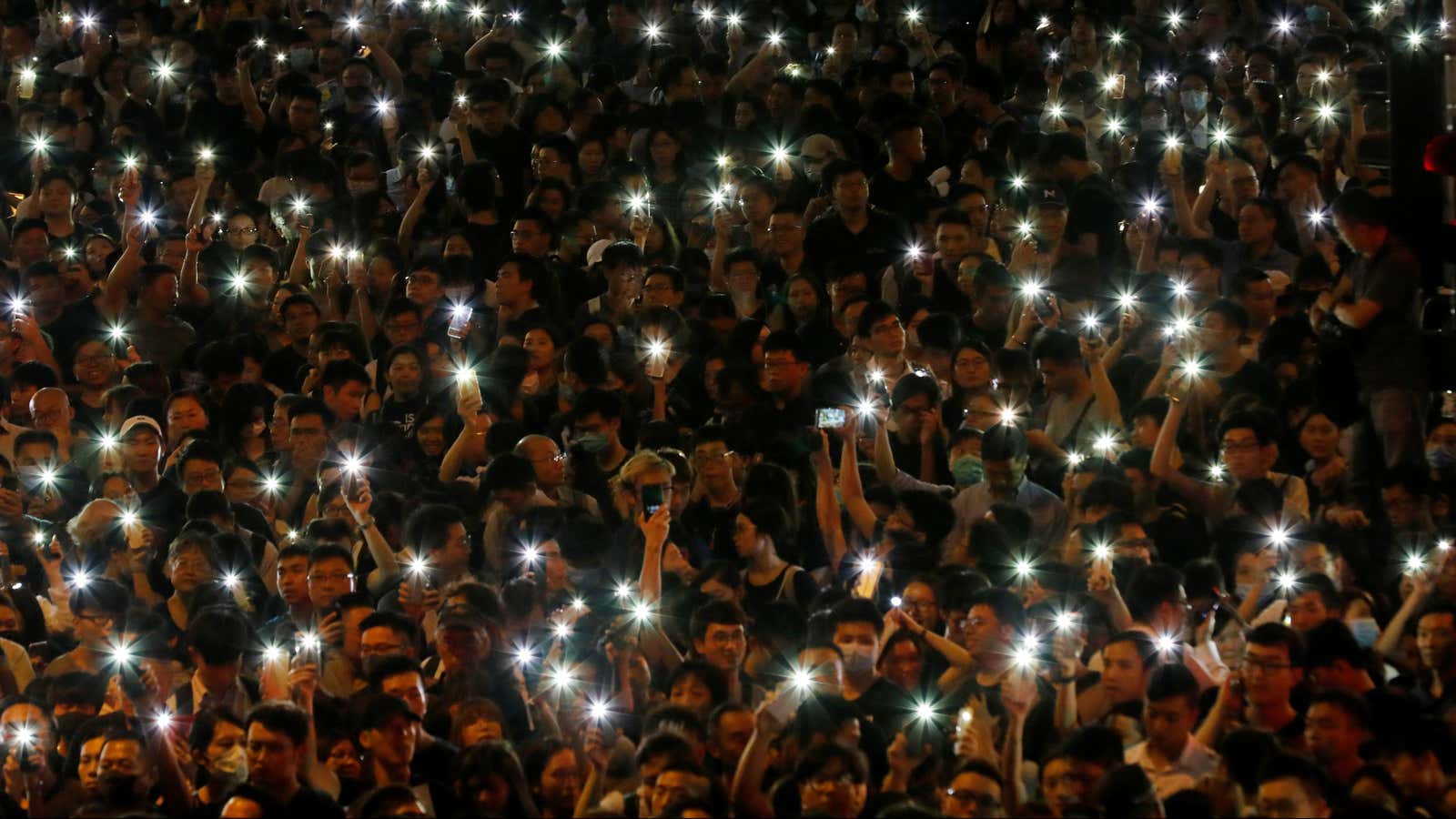As Hong Kong’s government clamps down on pro-democracy protestors, Carrie Lam, chief executive of the special administrative region, has left open the possibility of shutting off internet access. Doing so would stymie protestors’ organizational efforts and could stanch the flow of information from the region.
In response to the potential threat, protestors have begun using mesh networking technologies. These services rely on Bluetooth, allowing users to communicate through a network of devices that are linked locally, rather than over an internet connection. These types of connections are often called peer-to-peer networks.
It’s not the first time protesters in the region have turned to mesh networks to stay organized. One such app, FireChat, played an important role in Hong Kong’s 2014 democracy protests. More recently, an app called Bridgefy—available for free on iOS and Android—has soared in popularity.
“We’ve seen more than 60,000 app installations in just the past seven days, most of them from Hong Kong,” Bridgefy CEO Jorge Rios told Forbes Monday (Sept. 2). “People are using it to organize themselves and to stay safe, without having to depend on an internet connection.”
Rios also said the app created minimal danger for users, “with there being very little risk of messages being read by unwanted eyes.” However, computer security expert Alan Woodward, a professor at the University of Surrey, threw cold water on that claim.
“With any peer-to-peer network, if you have the know-how, you can sit at central points of it and monitor which device is talking to which device and this metadata can tell you who is involved in chats,” Woodward told BBC. “[A]nyone can join the mesh and it uses Bluetooth, which is not the most secure protocol.”
He added: “The authorities might not be able to listen in quite so easily but I suspect that they will have the means of doing it.”
Rios denied Woodward’s assertions. The Bridgefy CEO said he cannot divulge whether Hong Kong users are primarily using direct messages (which are encrypted) or public broadcasting (which is not). He also told Quartz it’s “highly unlikely but not impossible” for Hong Kong’s government to trace messages to individual users by monitoring the public broadcast channel. Nonetheless, Rios said, “We urge users to exercise caution.”
Despite potential shortcomings, Bridgefy exemplifies the tools Hong Kong protestors have at their disposal, even if the government blocks internet service providers. The protests also emphasize the need for open-source, peer-to-peer encrypted messaging software. For now, Briar—one of the best mesh network alternatives, which makes its source code public and encrypts your messages—is only available on Android.
This post has been updated to include comments from Bridgefy’s CEO.
